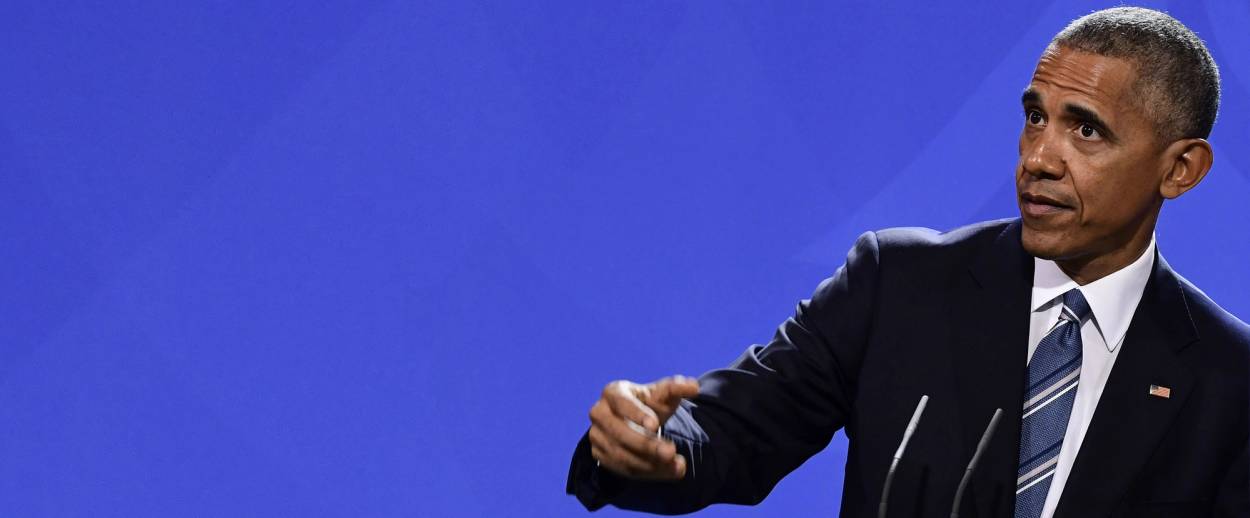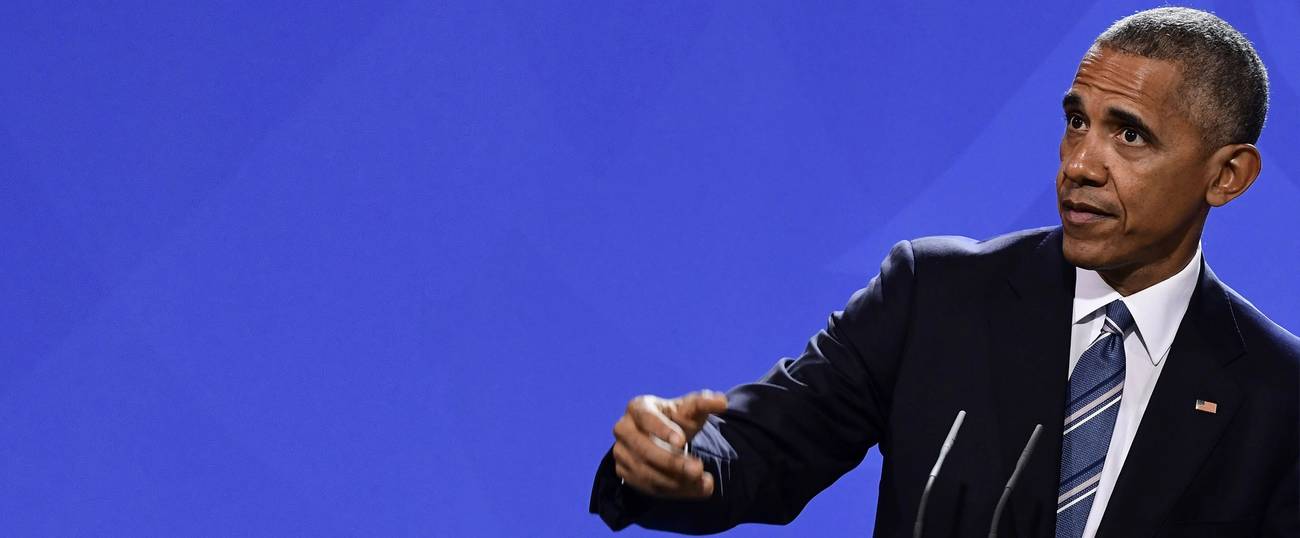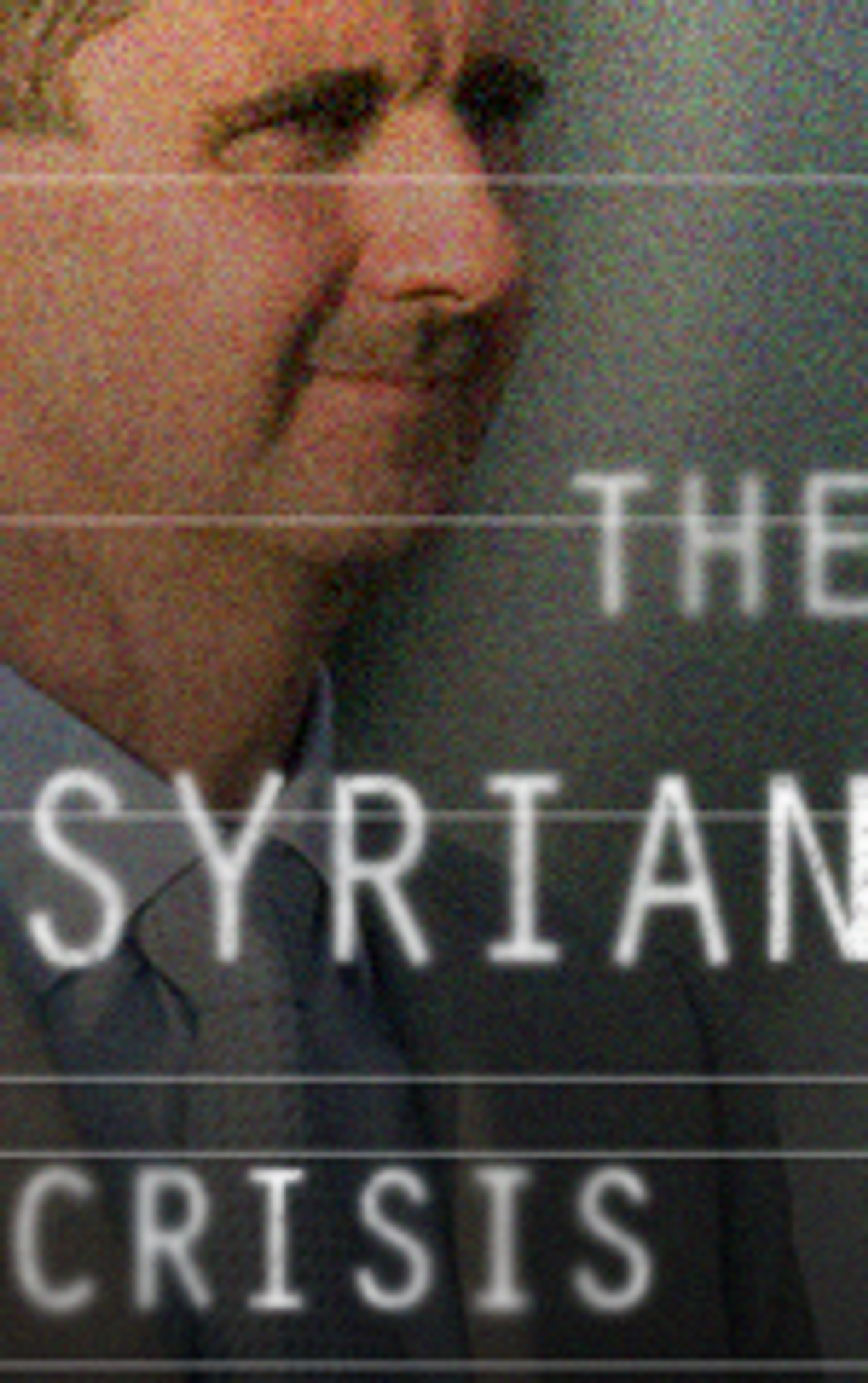Obama Tries to Pin His Syria Policy on Trump
But the current humanitarian and geopolitical disaster under Assad is the result of specific decisions in the last six years




Talking to reporters in Germany on Thursday, President Barack Obama expressed the hope that President-elect Donald Trump will be “willing to stand up to Russia where they are deviating from our values and international norms.” For anyone who has followed U.S. Syria policy closely for the past six years, the question of exactly what Obama believes those “values” and “norms” are—given his deliberate and determined facilitation of the slaughter of 500,000 Syrians, in concert with Assad, Iran, and Putin—is certainly an interesting one. The political meaning of Obama’s statement was clear, though: The president hopes to stick Trump with the gruesome results of his Syria policy while pretending that what might well turn out to be Trump’s own cooperation with Putin is somehow a startling departure from the course that he set and proudly and repeatedly refused to alter during six years of stomach-turning mass murder of innocent civilians by a genocidal regime.

Historians and scholars will no doubt spend years excavating the enormous mountain of bad faith and poor decision-making that led to the moral, political, and large-scale human disaster of America’s complicity in Assad’s genocide, which has been visible for the past few years to the entire world—and especially to the people of the Middle East, whose good opinion Obama once sought to court. The decision not to intervene in Syria’s civil war, and then to facilitate Assad’s murder of his own people through political and military coordination with Iran and Russia, was Obama’s, and Obama’s alone: Those who opposed that decision in any meaningful way are long gone from his administration. The list of the people who did the president’s dirty work, and gave him cover for this shameful policy, will be clear to anyone who looks at the historical record, which will provide a damning indictment of the characters and judgments of administration officials who abetted the bloodshed, like Robert Malley, the White House point man on Syria, and Samantha Power, the American ambassador to the U.N., who used her reputation as a humanitarian as a cloak for U.S. inaction—and worse—in the face of open genocide.
A footnote to this dishonorable history will be the conference hosted by Assad in Damascus last month for a group of American and European journalists and think tankers, with the goal of normalizing American complicity in Syria’s genocide, and preparing the ground for what all parties imagined would be a Hillary Clinton presidency.
The junket was set up by Assad’s father-in-law, Fawwaz al-Akhras, under the guise of a conference organized by Akhras’s British Syrian Society. The affair was a classic information operation designed to relay regime talking points. But these things don’t just come out of the blue: The path to Damascus had to be cleared first. And it was the Obama White House that did the clearing.
To aid future historians in writing this story, and to provide a check on this kind of activity in future administrations—starting with the Trump administration—I would like to explain how this kind of information operation works. Assad making use of Western journalists and media is hardly new, of course. Nor are the services of his father-in-law, in that regard, as a cache of Assad’s emails, hacked and made public in 2012, has shown. But Akhras wasn’t the only or even most relevant figure showcased in Assad’s correspondence. That more prominent role belongs to Khaled al-Ahmad, a man who would emerge at the center of the White House’s channel to Assad. Remember that name.
Ahmad appears in the correspondence as an adviser of sorts to Assad; a troubleshooter active on the ground and offering counsel on issues ranging from security policy to monetary policy. Although he has been referred to as a “businessman” from the city of Homs, it’s not quite clear what, exactly, his “business” is. Then again, in the context of the Assad regime, such categories tend to be fungible. And so Ahmad the “businessman,” a local notable of sorts in Homs, also doubles, among other things, as a handler of Western journalists eager to make contact with Assad.
It is in the role of journalistic facilitator that Ahmad initially became visible. In November of 2011, Ahmad tells the boss that journalist Nir Rosen, having managed to enter the then-besieged quarter of Bab Amr in Homs, had informed him about a group of Western journalists who had crossed illegally from Lebanon: Presumably, that information helped the regime with its targeting.
The grotesque relationship between Ahmad and “journalists” like Rosen is one the press needs to pay more attention to. Indeed, as we learn from an email by Assad media adviser Hadeel al-Ali, it was Ahmad who had brought Rosen to Assad’s attention: Rosen had been in the country for two months, having got “his cover from Khaled [Ahmad] and his people.” Oh, and, al-Ali told Assad, Rosen has been “trying desperately [to] see you.”
Ahmad’s connection with Rosen would endure, and ultimately intersect with, other, bigger channels Assad tasked Ahmad with. Namely, contact with the White House.
Reportedly, Ahmad’s known contact with the administration may have started in late 2013—after Obama’s red-line fiasco and ahead of planned talks between the regime and the opposition at the Geneva II conference in January 2014. Although the conference was supposed to begin talks over a political transition, as the Obama administration called it, Ahmad met with then-Special Envoy for Syria Robert Ford in order to make a completely different pitch: The United States should partner with Assad to fight terrorism. The moment was pivotal, as late 2013 was when the White House began messaging that Assad would be around “for the foreseeable future” and that President Obama privately regretted calling on him to “step aside” in 2011.
The White House’s direct channel to Assad would develop in 2014. That was the year Robert Malley joined the National Security Council. That same year, Nir Rosen started working with the Centre for Humanitarian Dialogue, “a Swiss-based private diplomacy organization.” Rosen then came to Washington and met with Malley. He then published a paper about local cease-fires and freezing the conflict in Syria, which Malley distributed at the NSC. White House surrogates then laundered the points in Rosen’s paper through more mainstream U.S. venues (a process I laid out in detail here).
That summer, Ahmad—billed as a “senior strategic adviser” to the Syrian government—shows up as a participant at the Oslo Forum, hosted annually by the center where Rosen works, and mingles with European fellow seekers of peace and dialogue. The proposals of Rosen’s paper, such as “local cease-fires,” were discussed and lauded as a model for peacemaking in Syria. Over the next two years, Ahmad’s hobnobbing with European diplomats grew more regular. This past June, he was back again at the Oslo Forum.
Ahmad continued developing the channel to Malley at the White House in 2015, and he arranged for Malley’s predecessor at the NSC, Steven Simon—a pillar of the White House’s Syria echo chamber—to visit Assad in Damascus that spring. Simon had left the White House in late 2012, and was then affiliated with the Middle East Institute. According to The Wall Street Journal, Simon had met Ahmad “at least twice before the Damascus trip.” Simon met with Malley before the visit and briefed him afterward: The Middle East Institute ended its relationship with Simon following his trip.
Did Assad’s propagandists and fixers manipulate an innocent White House? Hardly. They provided a channel for conversations that the White House wanted to have.
The people that both the fixers and the White House manipulated were the reporters and think-tankers who claimed insight into U.S. Syria policy while in fact acting as megaphones for the lies and half-truths that covered the actual aims and progress of a policy that many of the administration’s most vocal supporters now identify as a “failure,” and may privately even lament. How did this happen? they wonder. Well, it happened because it was U.S. government policy—a thought that is apparently too much for most opinion writers and analysts to stomach, because that means that it was the policy of the president of the United States, whom they admire, and because it would mean that they were also guilty of sins of omission and commission that helped Assad commit genocide, so better not to look at that too closely. Let’s pin it on Trump. Except it’s too late—both for the people of Syria, and for them.
***
You can help support Tablet’s unique brand of Jewish journalism. Click here to donate today.
Tony Badran is Tablet’s news editor and Levant analyst.